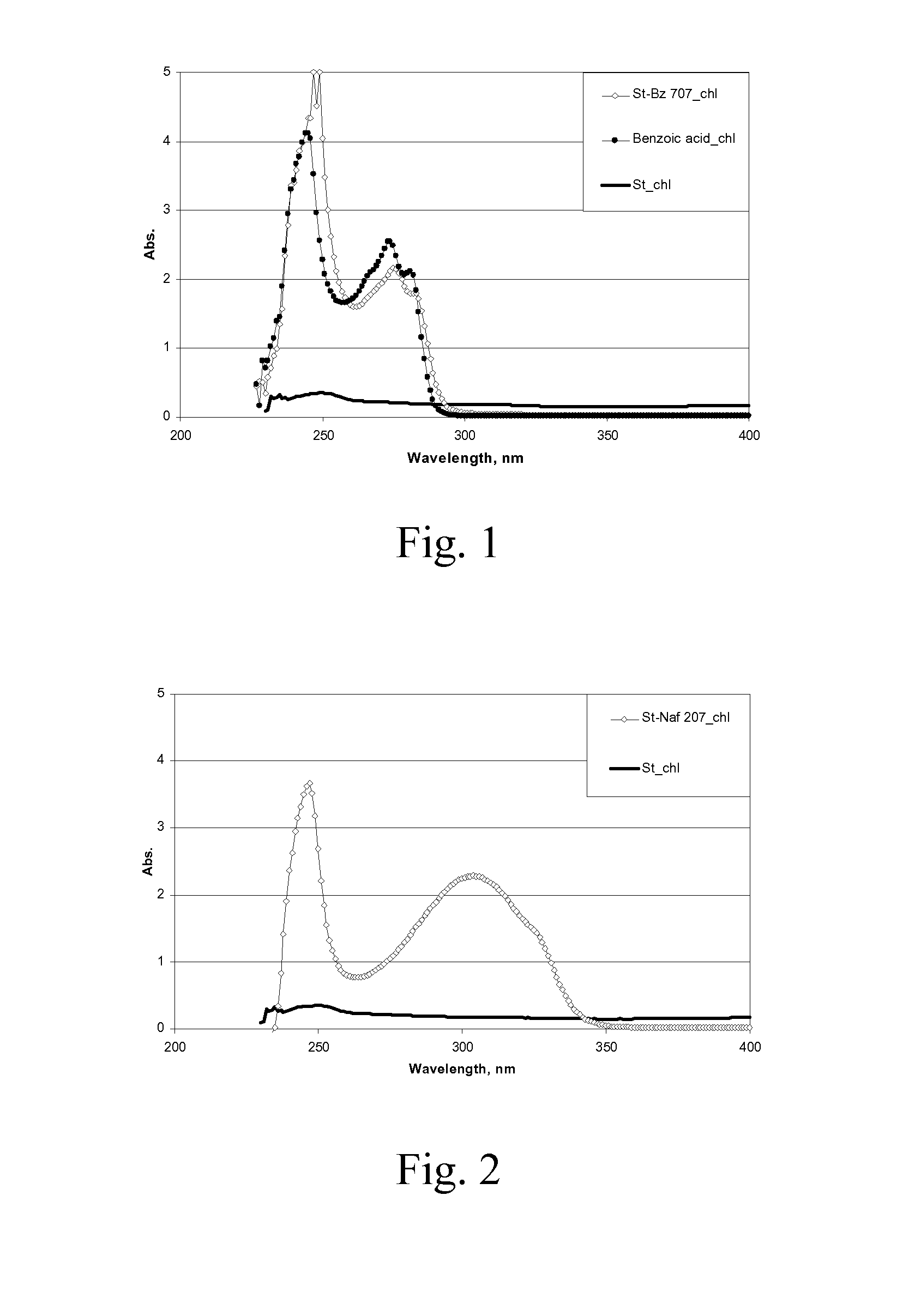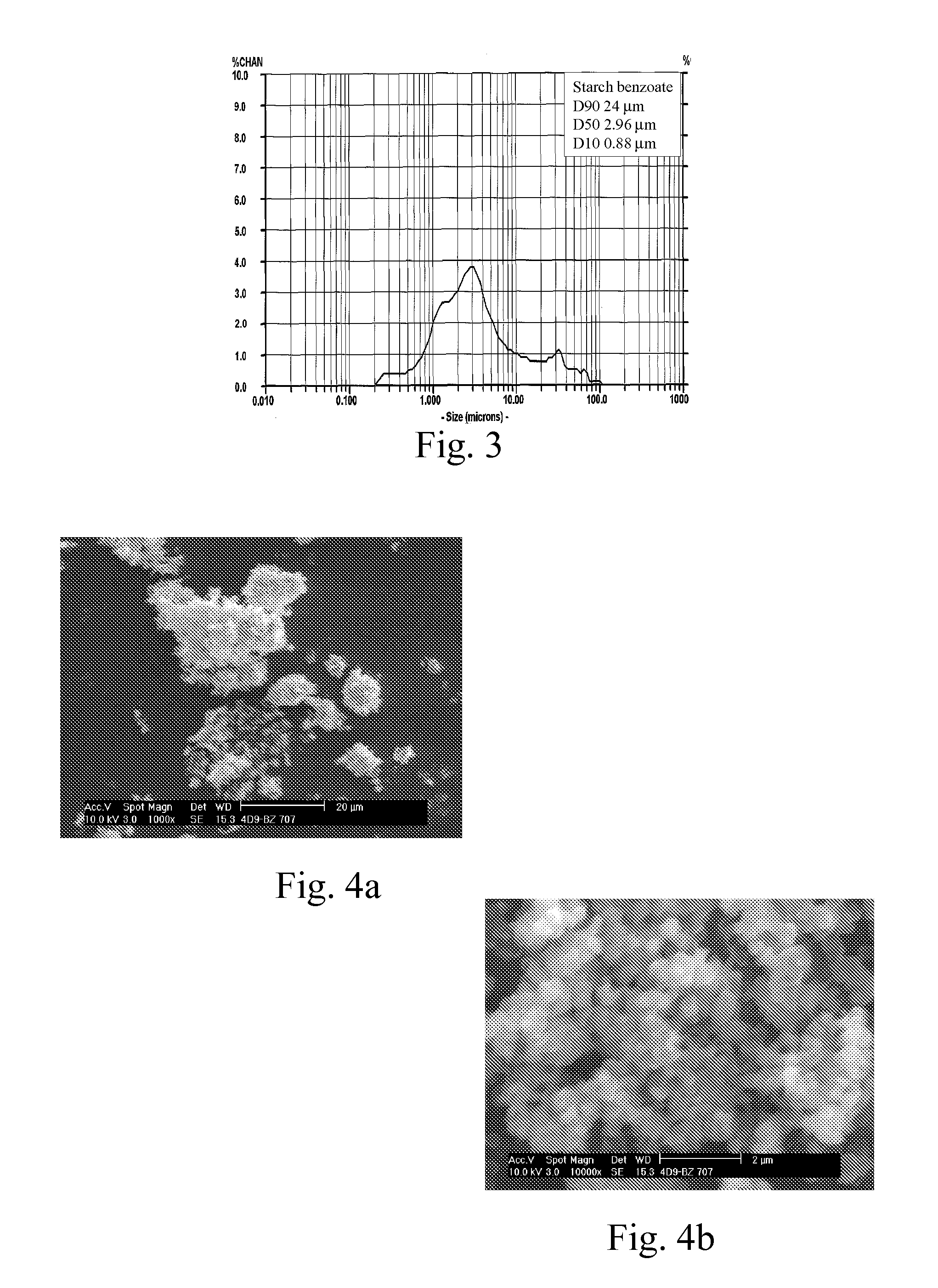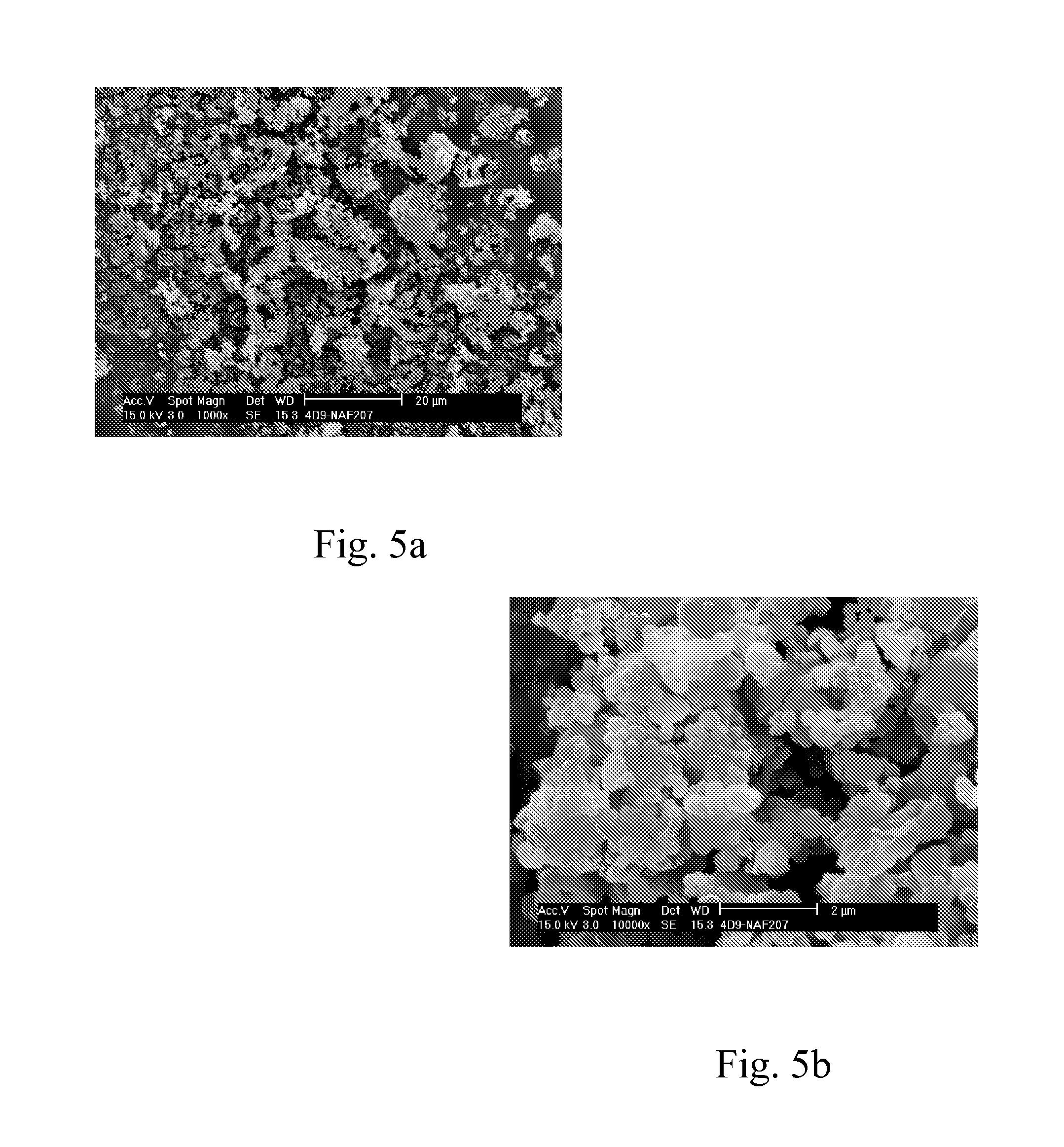Novel polysaccharide-based pigments and fillers
a polysaccharide-based, pigment-based technology, applied in the direction of esterified saccharide compounds, natural mineral layered products, synthetic resin layered products, etc., can solve the problem of increasing the proportion of incombustible residues, affecting the recyclability of products in the deinking stage, and printing paper and board grades contain considerable amounts of inorganic pigments and fillers. achieve the effect of improving optical properties
- Summary
- Abstract
- Description
- Claims
- Application Information
AI Technical Summary
Benefits of technology
Problems solved by technology
Method used
Image
Examples
example 1
[0096]Preparation of Starch Benzoate
[0097]A series of starch benzoates was prepared with varying reaction times and temperatures. Dried hydrolyzed potato starch (St) was suspended in pyridine. Benzoyl chloride (Bz-Cl) (C6H5COCl, 140.57 g / mol) was added to the suspension at room temperature and the reaction was carried out at elevated temperature for varying reaction times. The product was isolated and washed with warm ethanol (˜30° C.). The products were analyzed for solubility, glass transition temperature (Tg, detected at the second heating time) using Differential Scanning calorimetry, thermal decomposition (T10%, temperature at 10% weight loss) using Thermogravimetry, and the aromatization was confirmed with FT-IR spectroscopy and the average degree of substitution (DSBz) was analyzed with Nuclear Magnetic Resonance spectroscopy (NMR). The evaluation of refractive index (RI) of the dried powdery materials was carried out using the so-called Becke line test that employs transmiss...
example 2
[0101]Preparation of Starch Acetate Benzoate
[0102]Acetylated starch (SA) (average DSAcet 2) was benzoylated in a similar system as used in Example 1. The SA product was transglycosylated as described in WO03 / 068823. The preparation conditions and analysis results are summarized in Table 2.
TABLE 2Preparation conditions, yield and characteristics of starch acetate benzoateStarch acetate / ReactionYield / SolidsBz-Cl / pyridine,temp. / time,content,Tg / T10%,Sample idG / g / ml° C. / hoursg / %DSBz° C. / ° C.RISA———0113; 158 / 3381.45-1.50SA-Bz 10620 / 26.5 / 150105 / 323 / 960.9145 / 3441.50-1.55
[0103]The product was insoluble in water and soluble in acetone, toluene, tetrahydrofuran, chloroform and dimethylsulfoxide. Compared to the FT-IR spectrum of the starting starch acetate, the spectra of the starch acetate benzoylation product contained the characteristic absorption bands of aromatic compounds.
[0104]The estimated value of RI for the product appeared to be somewhat higher than that obtained for the starting s...
example 3
[0105]Preparation of Sucrose Benzoate
[0106]A disaccharide, sucrose (table sugar) was benzoylated in a similar system as used in Example 1. The preparation conditions and analysis results are summarized in Table 3.
TABLE 3Preparation conditions, yield and characteristics of sucrose benzoate.Sucrose / Bz-Cl / ReactionYield / Solidspyridine,temp. / time,content,Tg / T10%,Sample idg / g / ml° C. / hoursg / %DSBz° C. / ° C.RISucrose———0—1.50-1.55Sucrose-Bz 10710 / 40 / 4065 / 317 / 963.550 / 3601.55-1.60
[0107]The product was insoluble in water and soluble in acetone, toluene, tetrahydrofuran, chloroform and dimethylsulfoxide. The FT-IR spectrum of the sucrose benzoylation product contained the characteristic absorption bands of aromatic compounds. The estimated value of RI for the product appeared to be somewhat higher than that obtained for the starting disaccharide.
PUM
| Property | Measurement | Unit |
|---|---|---|
| pore size | aaaaa | aaaaa |
| pore size | aaaaa | aaaaa |
| pore size | aaaaa | aaaaa |
Abstract
Description
Claims
Application Information
 Login to View More
Login to View More - R&D
- Intellectual Property
- Life Sciences
- Materials
- Tech Scout
- Unparalleled Data Quality
- Higher Quality Content
- 60% Fewer Hallucinations
Browse by: Latest US Patents, China's latest patents, Technical Efficacy Thesaurus, Application Domain, Technology Topic, Popular Technical Reports.
© 2025 PatSnap. All rights reserved.Legal|Privacy policy|Modern Slavery Act Transparency Statement|Sitemap|About US| Contact US: help@patsnap.com



